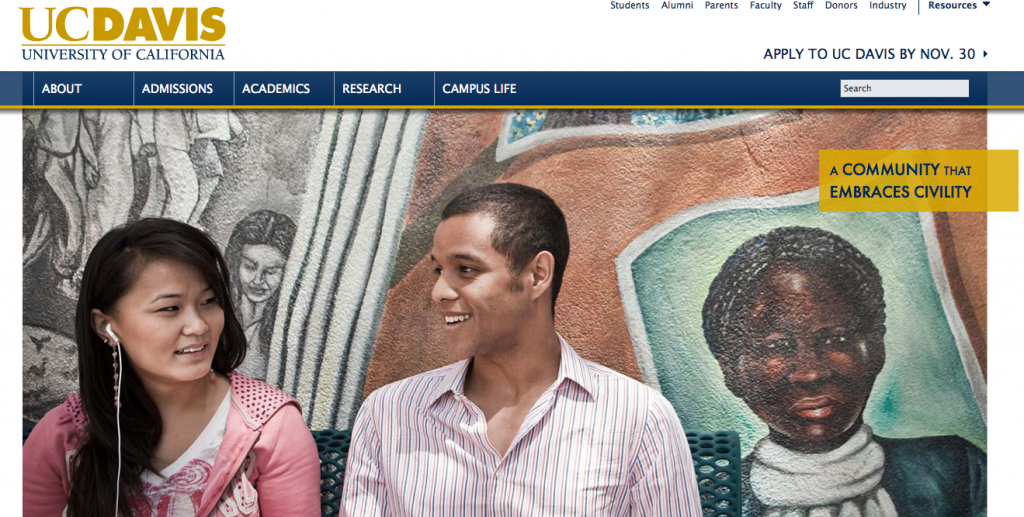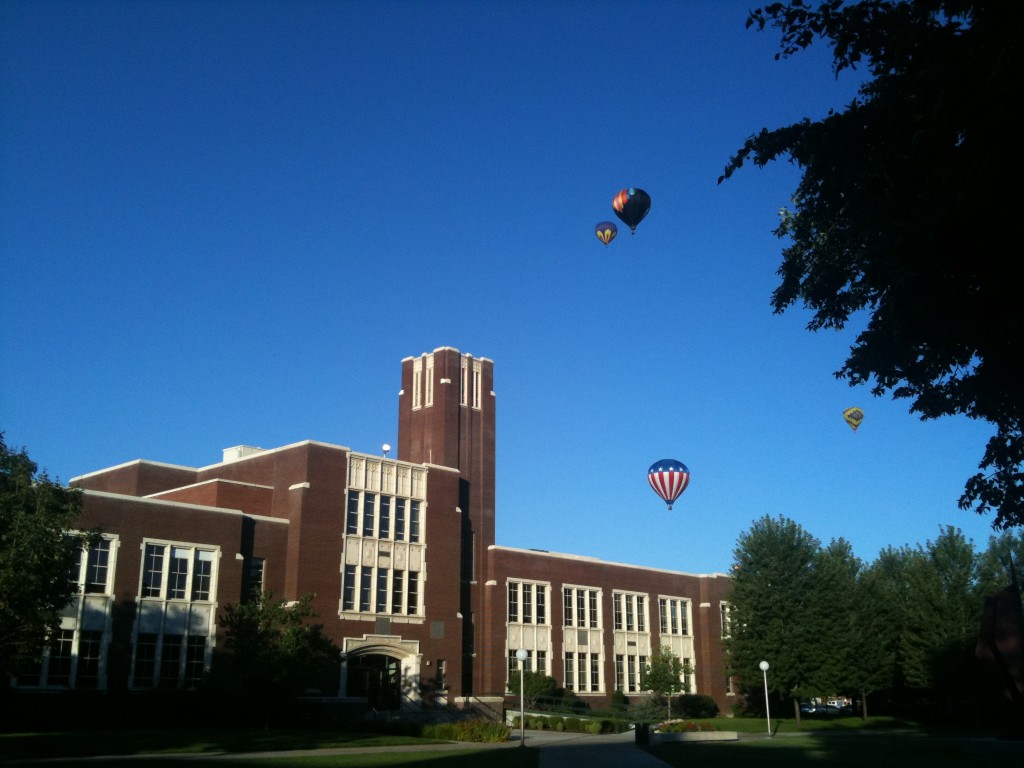In case you missed it, here’s what’s going on at my alma mater this week:
. . .and here’s a screenshot of the campus’s home page:
Dissonance!
As you can see from the video, many students recorded these events, so if you’re interested in raising your blood pressure and righteous indignation, you can watch several of them on YouTube. Here are a few:
And some international coverage:
Media sources are reporting that the officer who sprayed the students is Lt. John Pike. (His LinkedIn page says he’s open to “job inquiries” and “expertise requests.” I’m sure law enforcement departments across the U.S. will be knocking on his door, eh?)
Nathan Brown, an assistant professor of English at UC Davis, has asked for the chancellor’s resignation. Here’s an excerpt from his open letter:
Police used batons to try to push the students apart. Those they could separate, they arrested, kneeling on their bodies and pushing their heads into the ground. Those they could not separate, they pepper-sprayed directly in the face, holding these students as they did so. When students covered their eyes with their clothing, police forced open their mouths and pepper-sprayed down their throats. Several of these students were hospitalized. Others are seriously injured. One of them, forty-five minutes after being pepper-sprayed down his throat, was still coughing up blood.
Hey, look–you can leave a note for UC Davis Chancellor Linda Katehi. You can bet I did. I believe I used the words “Clark Kerr must be spinning in his grave.”
Update: The UC Davis administration has representatives infiltrate protests.
How are things in your corner of academe?







